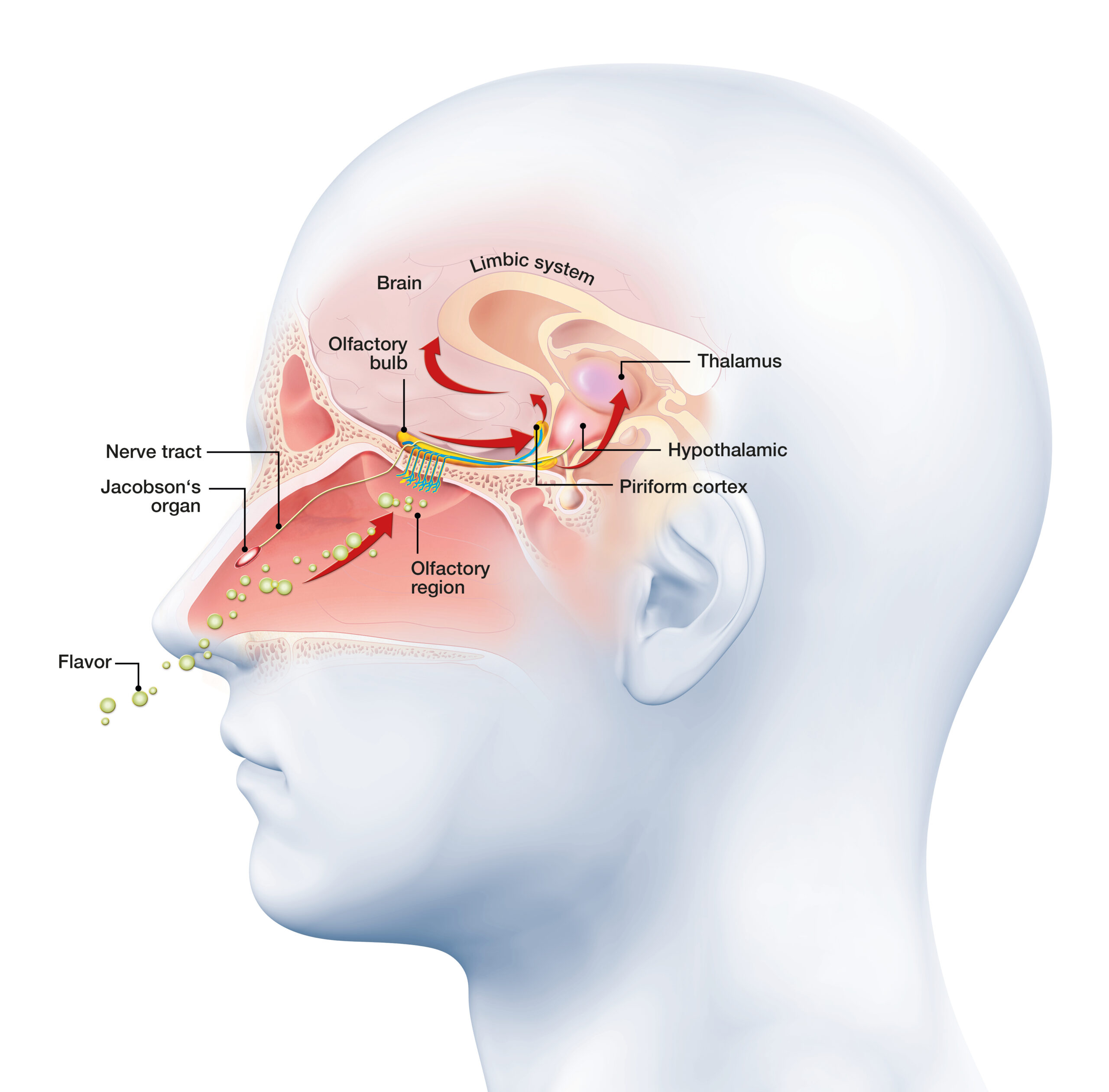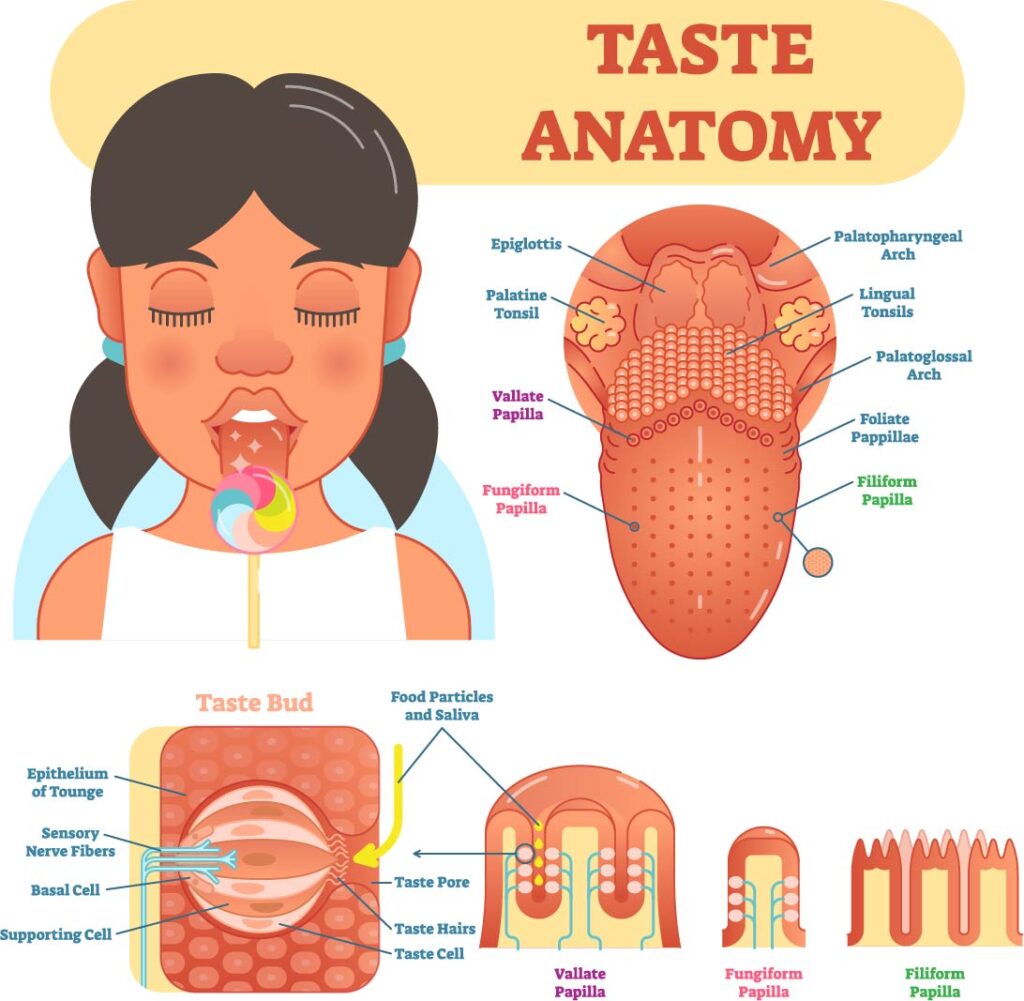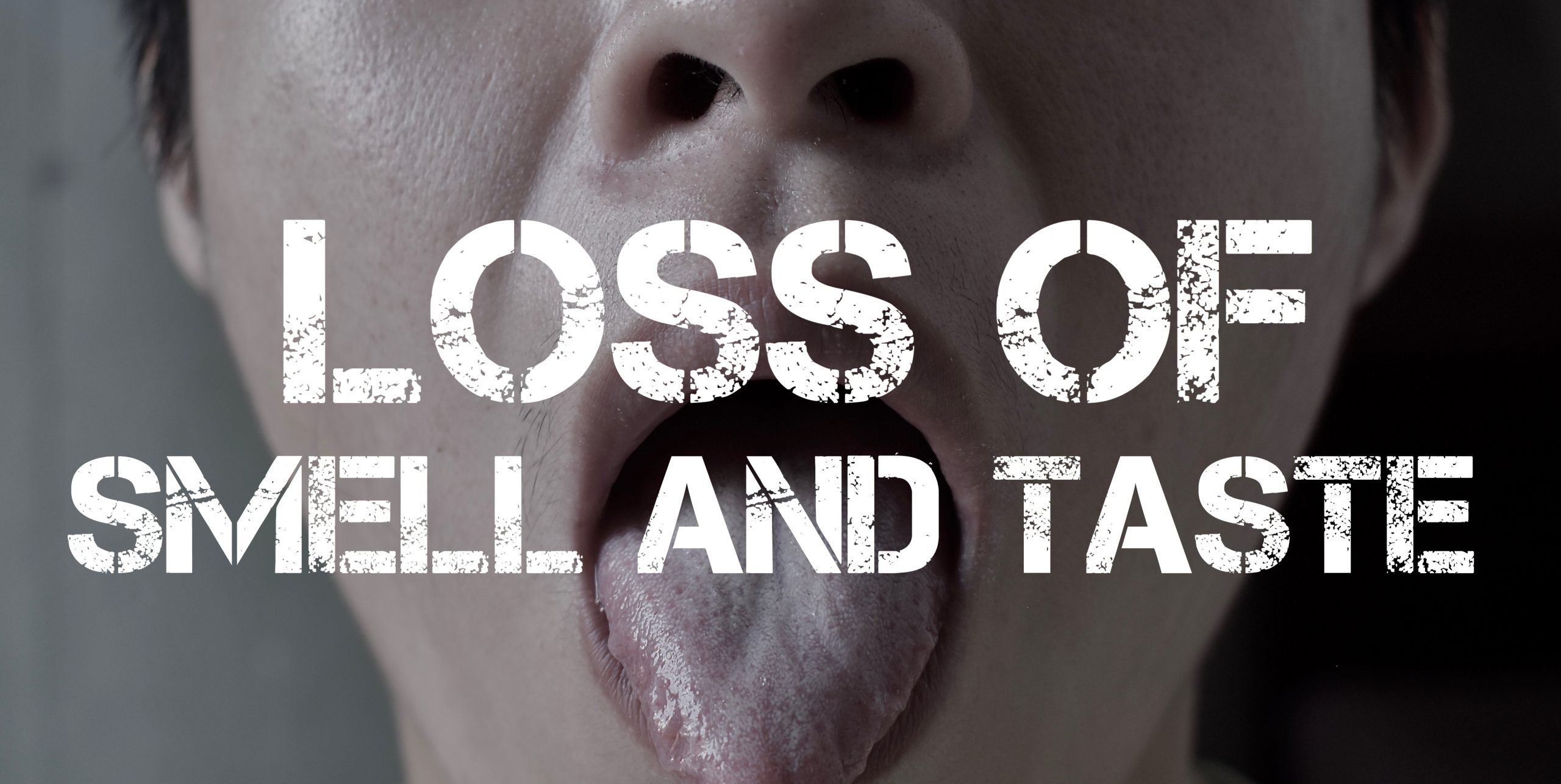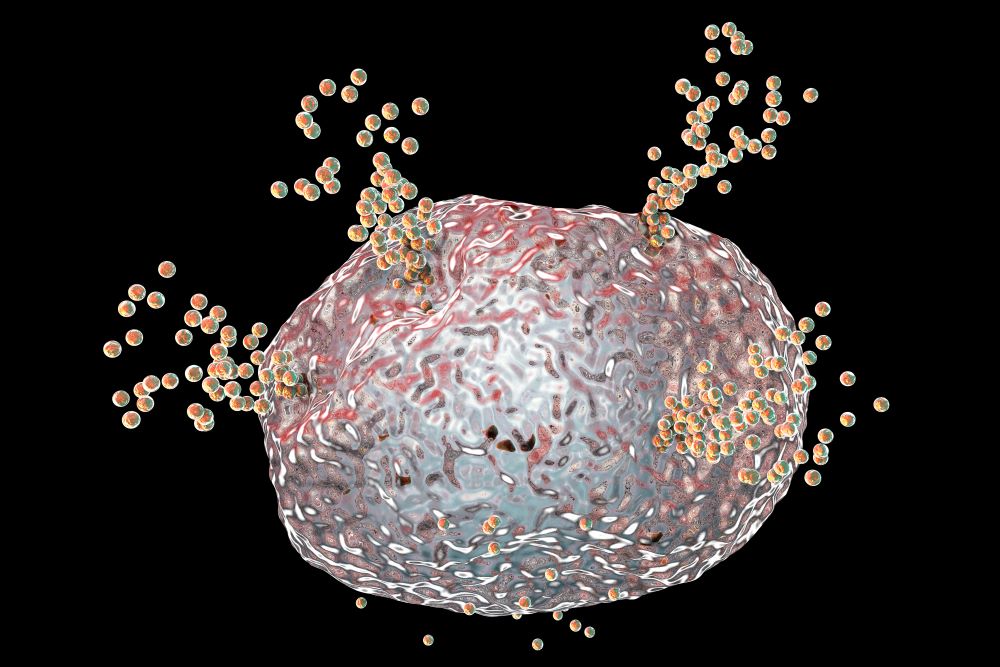Now live! RTHM Direct – simplified medication access for Long COVID, ME/CFS and related conditions. Check it out
When COVID cases began spreading, two common symptoms stood out as an indicator of potential infection – loss of smell and taste. Studies show that the loss of smell affects 41-61 percent of COVID patients while 38-49 percent experience taste loss. In most cases, your sense of taste or smell should return within a few months after COVID remission. However, many of those with Long COVID continue to experience the long-term loss or alteration of smell or taste for months to years after their initial SARS-CoV-2 infection. To gain a deeper understanding of how this is happening in Long COVID, it is important to learn how your senses work and how they work together.
The Chemosensory System
The chemosensory system is the body’s way of detecting chemicals within your environment. The three main systems that make up the chemosensory system include the olfactory system, the gustatory system, and the trigeminal chemosensory system. These systems rely on a network of receptors in the nasal cavity, mouth, skin, and eyes. Together, these three systems work to control what we smell and taste.
Olfactory System
The olfactory system is responsible for your sense of smell. Specialized sensory cells, known as olfactory sensory neurons, are found in the upper tissue of the nose and connect directly to the brain. As odors enter your nose, they release microscopic molecules that stimulate these odor receptors, sending a message directly to the brain, enabling you to identify the smell.
In addition to smells that enter through the nostrils, the olfactory system has a secondary pathway where smells can enter. This pathway connects the back of your throat to your nose. As you chew foods or drink beverages, odors are released and travel into the nose, again sending signals that allow you to process the odor and flavor. This is known as retronasal olfaction and is actually what contributes to the flavor of your food. As you can see, your sense of smell and taste are strongly connected.

Gustatory System

The gustatory system is responsible for your sense of taste. Your mouth is filled with taste receptors. While taste buds are found primarily found on the tongue, taste receptors are also found on the soft palate, upper esophagus, cheeks, and the epiglottis. When you eat food, these taste receptors transmit signals to the gustatory cortex or the area of the brain responsible for the perception of taste. However, the taste perception through these receptors is limited to five distinct modalities:
- Sweet
- Salty
- Bitter
- Sour
- Umami (savory)
Without your sense of smell, you are only able to detect these five tastes. In order words, without smell, a sweet peach could taste identical to a piece of chocolate or potato chips and pretzels would taste exactly the same. You would simply taste sweet or salty. This is why, when you have congestion, food often tastes bland.
Trigeminal Chemosensory System
The trigeminal chemosensory system, known as the common chemical sense, is made up of thousands of nerve endings throughout the eyes, nose, mouth, and throat, that are responsible for the detection of irritating molecules. For example, when you cut an onion, these nerve endings detect the chemicals released by the onion, making your eyes tear up or trigger coughing. In addition, this system plays a role in identifying strong taste sensations, such as the cooling flavor of mint or the burning sensation you experience when eating something with chili peppers.
Your Senses and the Long COVID
As we know, many individuals experience the loss of taste and smell as an initial symptom of COVID. In most cases, these senses resolve within a short period of time. However, many Long COVID patients are experiencing this change in senses for months to years after their COVID remission.
Now that you have a better understanding of the chemosensory system, how exactly is the SARS-CoV-2 virus wreaking such havoc in the nose and mouth? To learn more about how the virus affects the chemosensory system, how it affects life in the long term, and what possible treatment options are available, read How Does SARS-CoV-2 Contribute to Chemosensory Disorders?

Get updates
Join our mailing list



